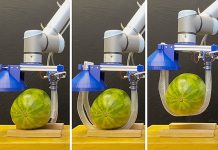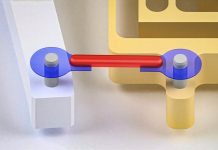
Factories of the future may look a lot more graceful, thanks to a new system called RoboBallet.
Scientists from University College London (UCL), Google DeepMind, and Intrinsic have developed an advanced artificial intelligence (AI) algorithm that allows multiple robotic arms to work together as smoothly as dancers in a well-rehearsed performance.
This breakthrough could save manufacturers hundreds of hours of planning time and bring unprecedented levels of speed and efficiency to industrial production.
In many modern factories, robotic arms already play an important role in building cars, assembling electronics, and carrying out other repetitive jobs.
But when several robots share the same space, things quickly get complicated. Each robot must avoid colliding with the others or with obstacles around them, while still completing tasks on time.
Until now, this kind of coordination had to be planned manually by human experts, a process that takes enormous effort and often involves hundreds of hours of programming. Mistakes are costly and common.
RoboBallet changes this picture completely. The system uses two advanced AI techniques—reinforcement learning and graph neural networks.
Reinforcement learning works by allowing the robots to learn through trial and error, receiving “rewards” when they complete tasks correctly and efficiently. Graph neural networks, on the other hand, help the robots understand their environment as a kind of map of connected points, making it easier to calculate the safest and most efficient movements.
When combined, these techniques allow RoboBallet to plan the movements of many robotic arms at once with incredible speed.
In experiments, after only a few days of training, RoboBallet was able to create complex plans in seconds, even for factory layouts it had never seen before. It successfully managed up to 40 different tasks involving eight robotic arms, far beyond what older systems could handle.
Matthew Lai, the study’s lead author and a researcher at UCL and Google DeepMind, compared the system to a dance performance.
“RoboBallet transforms industrial robotics into a choreographed dance, where each arm moves with precision, purpose, and awareness of its teammates,” he said. “It’s not just about avoiding crashes; it’s about achieving harmony at scale.”
One of the system’s most promising features is its ability to adapt instantly. Because it can generate plans hundreds of times faster than real-time, factories could quickly adjust if a robot breaks down or if the layout changes. RoboBallet can also help manufacturers design better production lines by recommending where to place robots for maximum efficiency.
Alex Li, an associate professor at UCL and co-author of the study, explained the challenge this solves. “In today’s factories, coordinating multiple robotic arms is like solving a moving 3D puzzle. Every action must be perfectly timed and placed to avoid collisions. Right now, this planning takes specialists hundreds of hours and is costly to design manually. RoboBallet can do it instantly, at scales and speeds humans simply can’t match.”
The potential applications are wide-ranging. The system could improve car manufacturing, electronics assembly, or even large-scale construction, such as using robots to help build houses. Any environment where many robots need to share space without interfering with each other could benefit.
At present, RoboBallet is focused on reaching tasks, where a robot moves its arm to a specific point—such as welding or attaching a component. But the researchers believe it could soon expand to more complex operations like picking and placing items, painting, or handling tasks that depend on a specific sequence of actions. They also hope to adapt it for teams of robots with different shapes, sizes, and abilities.
Of course, RoboBallet is still evolving. It doesn’t yet account for every possible factory situation, such as task orders or heterogeneous robot teams. But the researchers are confident that its flexible design makes it ideal for future upgrades.
By turning industrial work into a kind of graceful performance, RoboBallet may redefine the way factories operate—making them faster, safer, and more efficient, all while giving robots a new kind of elegance.
Source: University College London.



